The Ultimate 11 Least Expensive Electric Cars of 2025
The EV revolution is no longer a luxury movement – it is a mass market shift. In 2025, automakers are not just looking for high-end, six-figure EVs. Instead, they are also applying engineering brilliance to small, efficient, and least expensive electric cars.
Table of Contents
These aren’t gutless economy cars – they’re elegantly engineered vehicles with serious range. Providing remarkable torque and ground-breaking savings on gas, whether you’re facing a daily commute or a weekend wander.
1. Nissan Leaf (2025)
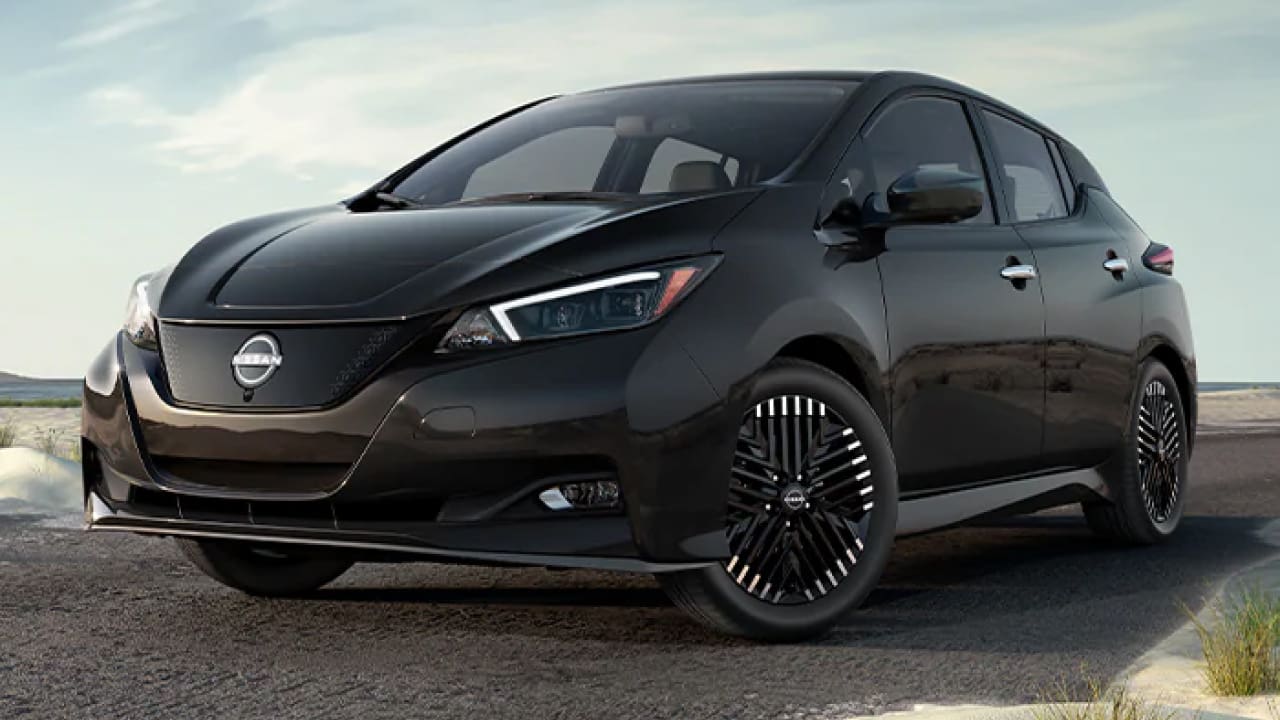
The Nissan Leaf is still one of the least expensive electric cars on the market and one of the first mainstream EVs when it first arrived in the US more than a decade ago. It’s remained competitive because of its proven reliability, useful packaging, and transparent pricing.
The 2025 Leaf is available in two configurations: a base model (Leaf S) and a more powerful edition (Leaf SV Plus). The base Leaf is great for short commutes, with a range of just under 150 miles, while the SV Plus offers a big jump-up in performance and battery capacity, which improves the range to over 200 miles.
What the Leaf lacks in flash, it makes up for in durability and value. It may not be the most sophisticated EV on the list, but for users who are serious about transitioning from gasoline to electric, the Leaf is still a solid and well-supported option.
Specifications
| Features | Leaf S | Leaf SV Plus |
| Starting Price | ~$28,000 | ~$36,000 |
| Range (EPA est.) | 149 miles | 212 miles |
| Battery Capacity | 40 kWh | 62 kWh |
| Charging Time (240V) | ~8 hours | ~11 hours |
| Fast Charging (DC) | ~60 minutes (to 80%) | ~60 minutes (to 80%) |
| Drivetrain | Front-Wheel Drive | Front-Wheel Drive |
| Horsepower | 147 hp | 214 hp |
| Torque | 236 lb-ft | 250 lb-ft |
| 0–60 mph | ~7.4 seconds | ~6.5 seconds |
2. Hyundai Kona Electric (2025)
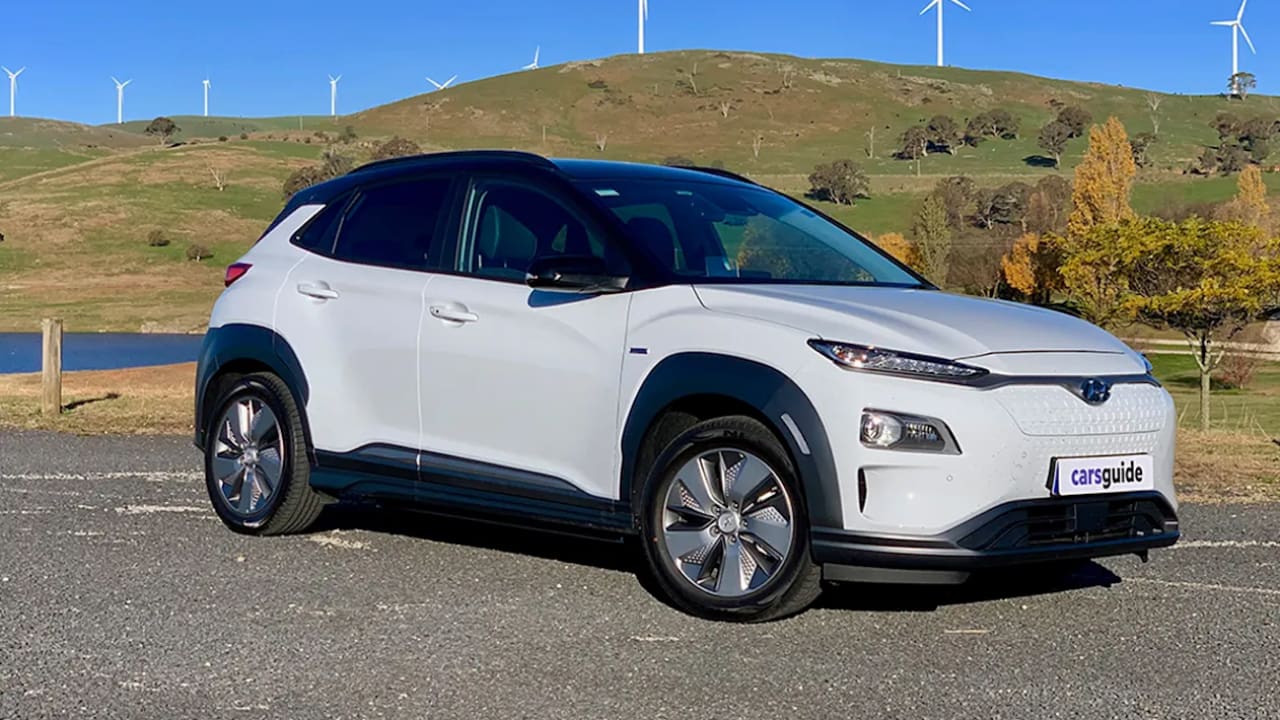
The 2025 Hyundai Kona Electric has been redesigned for a sleeker look and more interior space. However, the modification was made without changing its popularity reasons: long range, strong performance, and a crossover body that speaks to the practical driver.
As one of the least expensive electric cars in the compact SUV segment, it provides an estimated 260 miles of range, thanks to a 64.8 kWh battery that holds up under cold conditions.
The Kona is fast enough for its segment, and Hyundai’s infotainment and safety features are some of the best at this price. Its compact SUV size and raised ride height suit both city streets and longer road trips. This is an EV that combines capability, affordability, and a dash of fun. Those in need of an inexpensive, small-ish SUV that’s fun to drive will find a lot to like here.
Specifications
| Features | Details |
| Starting Price | ~$33,000 |
| Range (EPA est.) | 260 miles |
| Battery Capacity | 64.8 kWh |
| Charging Time (240V) | ~6 hours |
| Fast Charging (DC) | ~45 minutes (10–80%) |
| Drivetrain | Front-Wheel Drive |
| Horsepower | 201 hp |
| Torque | 291 lb-ft |
| 0–60 mph | ~6.4 seconds |
3. Chevrolet Equinox EV (2025)
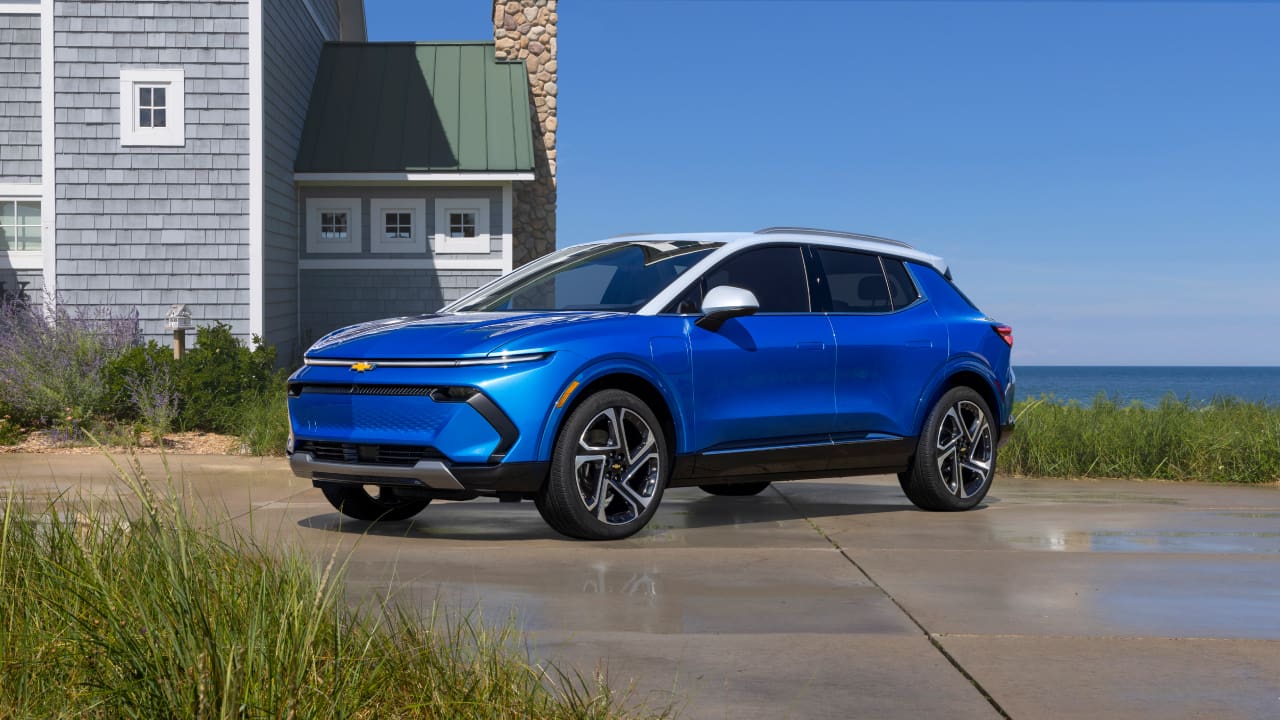
The Chevrolet Equinox EV is an important removal forward for GM’s electrification strategy. It’s based on GM’s new Ultium platform and aims squarely at the mainstream market, with stylish design, generous space, and surprising technology at an entry-level price.
The Equinox EV is offered in various trims, ranging from low-rolling-resistance 1LT to more powerful AWD models. The range is between 250 and 300-plus miles, depending on specifications. Inside, the cabin is minimalist but futuristic with an available 17.7-inch infotainment screen, over-the-air updates, and advanced safety systems.
You Might Like to Read: Discover the World’s Most Expensive Cars
Chevrolet’s mission with the Equinox EV is obvious: give the people a no-compromise EV SUV. It must be stylish, good to drive, and fit neatly in the suburban driveway without price premiums.
Specifications
| Features | FWD Model | AWD Model |
| Starting Price | ~$34,000 (1LT) | ~$39,000+ (2RS, 3RS) |
| Range (EPA est.) | 250–300 miles (trim dependent) | ~280 miles |
| Battery Capacity | ~85 kWh (estimated) | ~85 kWh |
| Charging Time (240V) | ~7.5 hours | ~7.5 hours |
| Fast Charging (DC) | ~40 minutes (10–80%) | ~40 minutes |
| Drivetrain | FWD | AWD |
| Horsepower | ~210 hp | ~290 hp |
| Torque | ~242 lb-ft | ~346 lb-ft |
| 0–60 mph | ~6.0–5.9 seconds | ~5.9 seconds |
4. Toyota bZ4X (2025)
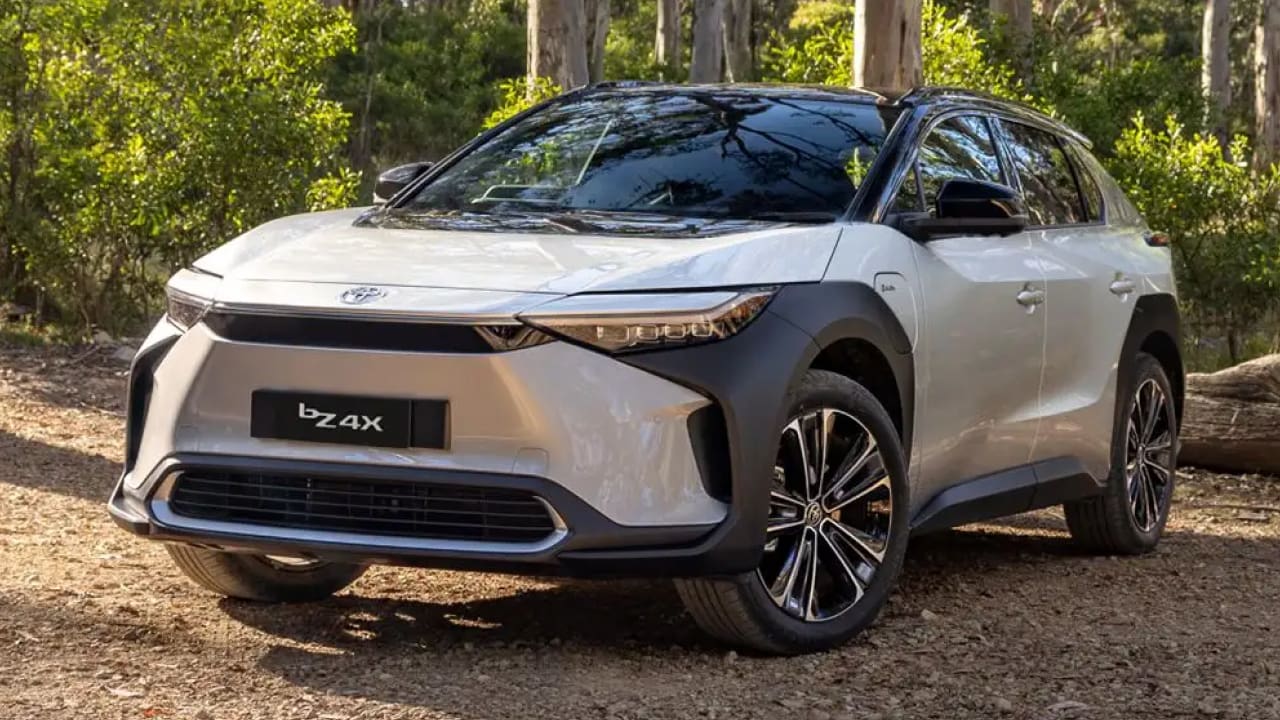
The bZ4X is Toyota’s first affordable mass-market EV, based on the e-TNGA platform, which was developed with Subaru. As one of the least expensive electric cars from a trusted brand, it offers a clean design, the usual Toyota reliability, and an understated electric driving experience all combined.
It’s not the most powerful or quickest EV, but the bZ4X is designed around comfort, cabin space, and smooth power delivery. It’s available in FWD or AWD, and the FWD version has just a bit more range. Its DC fast charging pace is slower than that of some competitors, but it is well executed for those who want brand trust and conservative design.
For Toyota, that means a greater focus on safety and usability: the bZ4X will come with the full complement of driver assistance systems and a long warranty. It’s a compelling offer for value-focused families and new EV adopters.
Specifications
| Features | FWD | AWD |
| Starting Price | ~$38,000 | ~$42,000 |
| Range (EPA est.) | 252 miles | 228 miles |
| Battery Capacity | 71.4 kWh | 72.8 kWh |
| Charging Time (240V) | ~9 hours | ~9.5 hours |
| Fast Charging (DC) | ~60 minutes (to 80%) | ~60 minutes |
| Drivetrain | Front-Wheel Drive | All-Wheel Drive |
| Horsepower | 201 hp | 215 hp |
| Torque | 196 lb-ft | 248 lb-ft |
| 0–60 mph | ~7.1 seconds | ~6.5 seconds |
5. Hyundai Ioniq 6 (2025)
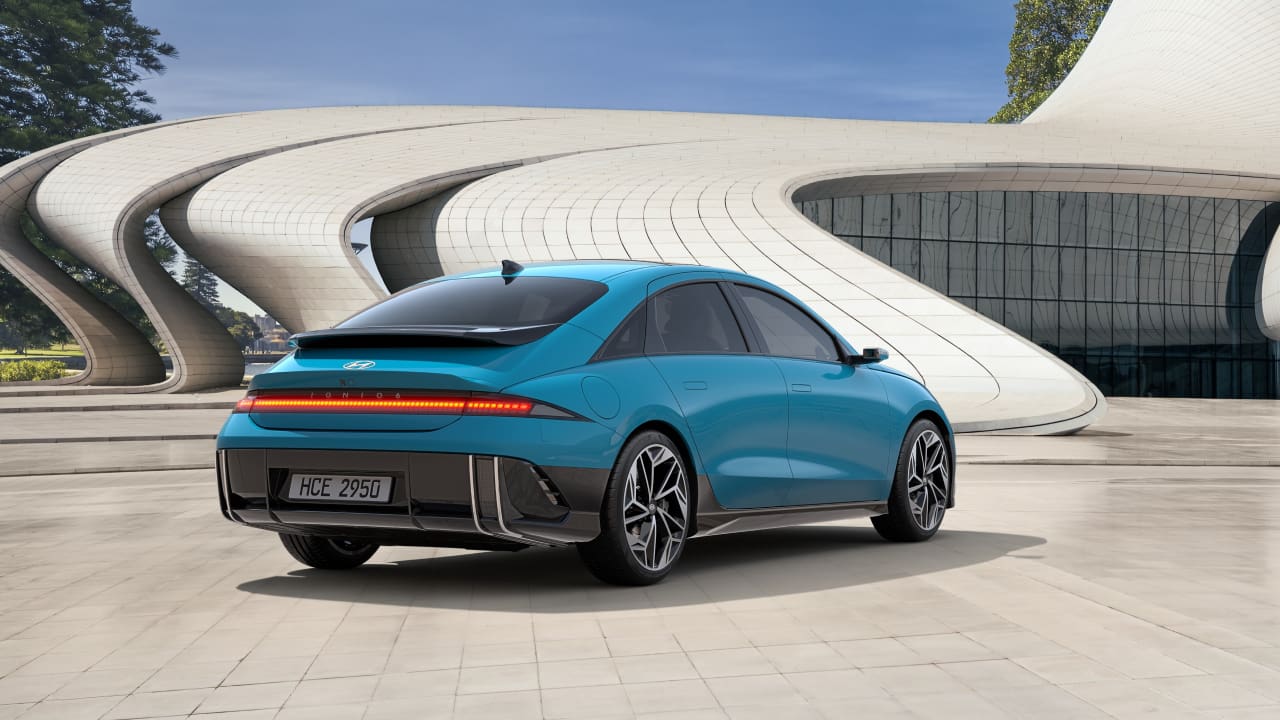
The Hyundai Ioniq 6 is a striking foray into electric sedans, blending breakthrough design with excellent aerodynamics and a strong driving range. Among the least expensive electric cars offering this level of performance, its low, aerodynamic shape cuts through air resistance, and that means it offers some of the best efficiency you’ll find on the market today.
With its Long Range RWD offering, the Ioniq 6 has a maximum mileage of 361 miles on a single charge and is also available with all-wheel drive. Its ultra-rapid 800V charging system is capable of charging from 10% to 80% in only 18 minutes – faster than almost any other vehicle on offer at its price point.
Despite looking snappy, the Ioniq 6 is more than a paint job and a clever design; it’s a genuine, confident EV with real-world range and practical luxury.
Specifications
| Features | RWD (Long Range) | AWD (Dual Motor) |
| Starting Price | ~$38,500 | ~$44,000 |
| Range (EPA est.) | 361 miles | 316 miles |
| Battery Capacity | 77.4 kWh | 77.4 kWh |
| Charging Time (240V) | ~6.5 hours | ~6.5 hours |
| Fast Charging (DC) | ~18 minutes (10–80%) | ~18 minutes |
| Drivetrain | Rear-Wheel Drive | All-Wheel Drive |
| Horsepower | 225 hp | 320 hp |
| Torque | 258 lb-ft | 446 lb-ft |
| 0–60 mph | ~6.2 seconds | ~5.1 seconds |
6. Subaru Solterra (2025)
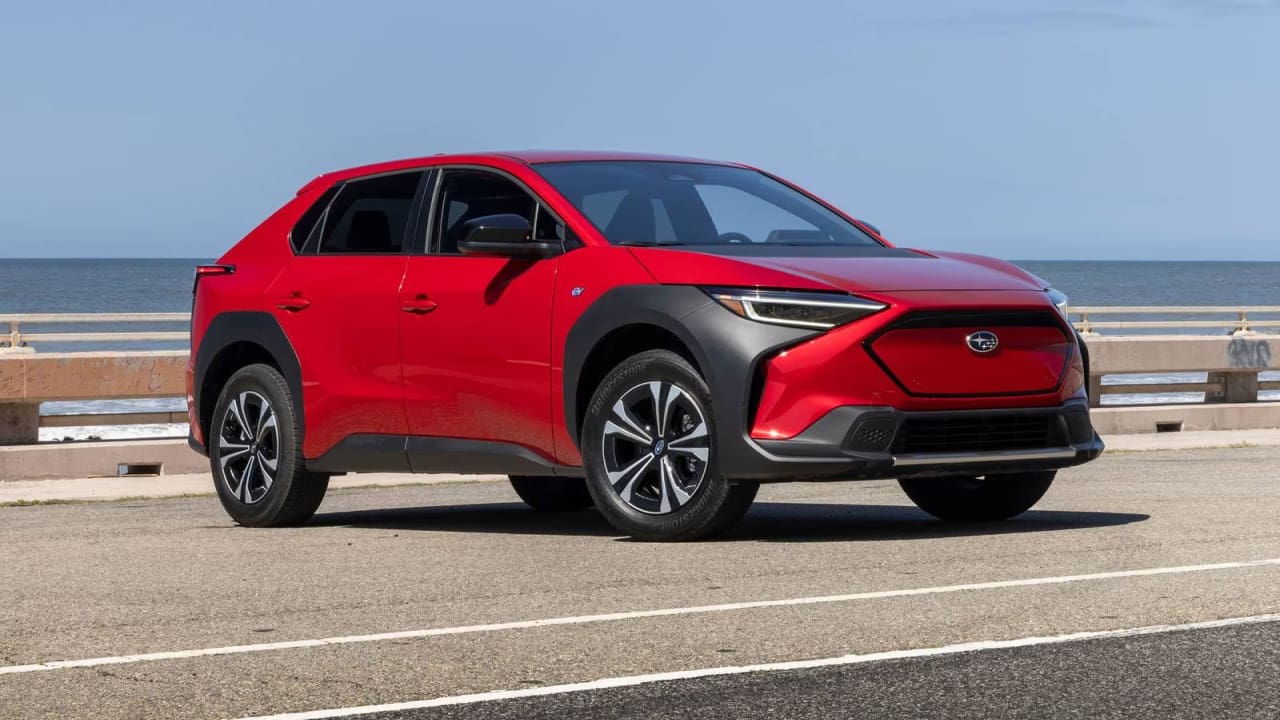
The Solterra is Subaru’s first all-electric model built on the same engineering as Toyota’s bZ4X. But it also adds Subaru’s signature symmetrical all-wheel drive as standard and makes for a more rugged aesthetic, off-road-capable offering to the table.
With ground clearance and ride height similar to the Forester, the Solterra is designed for adventurous buyers who want electric power without sacrificing outdoor usability. Though its range is more modest than some rivals, its off-road traction control, X-Mode system, and dual-motor AWD are standouts for drivers in varied terrains.
Specifications
| Features | Details |
| Starting Price | ~$44,000 |
| Range (EPA est.) | 228 miles (AWD only) |
| Battery Capacity | 72.8 kWh |
| Charging Time (240V) | ~9 hours |
| Fast Charging (DC) | ~56 minutes (10–80%) |
| Drivetrain | All-Wheel Drive (standard) |
| Horsepower | 215 hp |
| Torque | 249 lb-ft |
| 0–60 mph | ~6.5 seconds |
7. Ford Mustang Mach-E (Base Model – 2025)
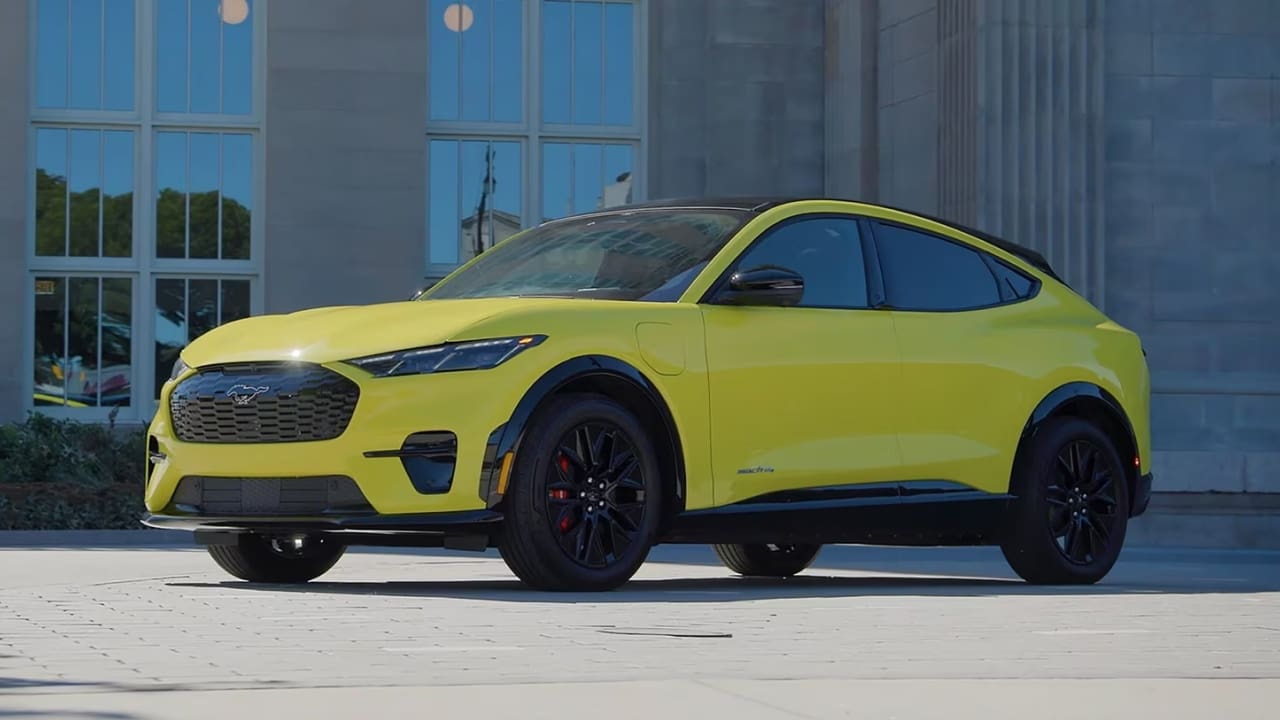
The Ford Mustang Mach-E has swiftly turned into a poster icon for electric crossovers of yesterday and tomorrow. While the GT and AWD trims can climb into premium packaging territory, the base model is competitively priced, offering an excellent combination of performance, range, and looks.
The base model for 2025 is more efficient with the battery and software updates. It’s responsive, and aggressive, and still carries the Mustang DNA in its sporty posture and quick acceleration, even at the entry level. This version attracts motorists who crave performance-bred handling without having to shell out the extra money for the GT version.
Specifications
| Features | Details |
| Starting Price | ~$39,895 |
| Range (EPA est.) | 250 miles (RWD Standard Range) |
| Battery Capacity | 70 kWh |
| Charging Time (240V) | ~7.5 hours |
| Fast Charging (DC) | ~33 minutes (10–80%) |
| Drivetrain | RWD |
| Horsepower | 266 hp |
| Torque | 317 lb-ft |
| 0–60 mph | ~6.1 seconds |
8. Kia Niro EV (2025)
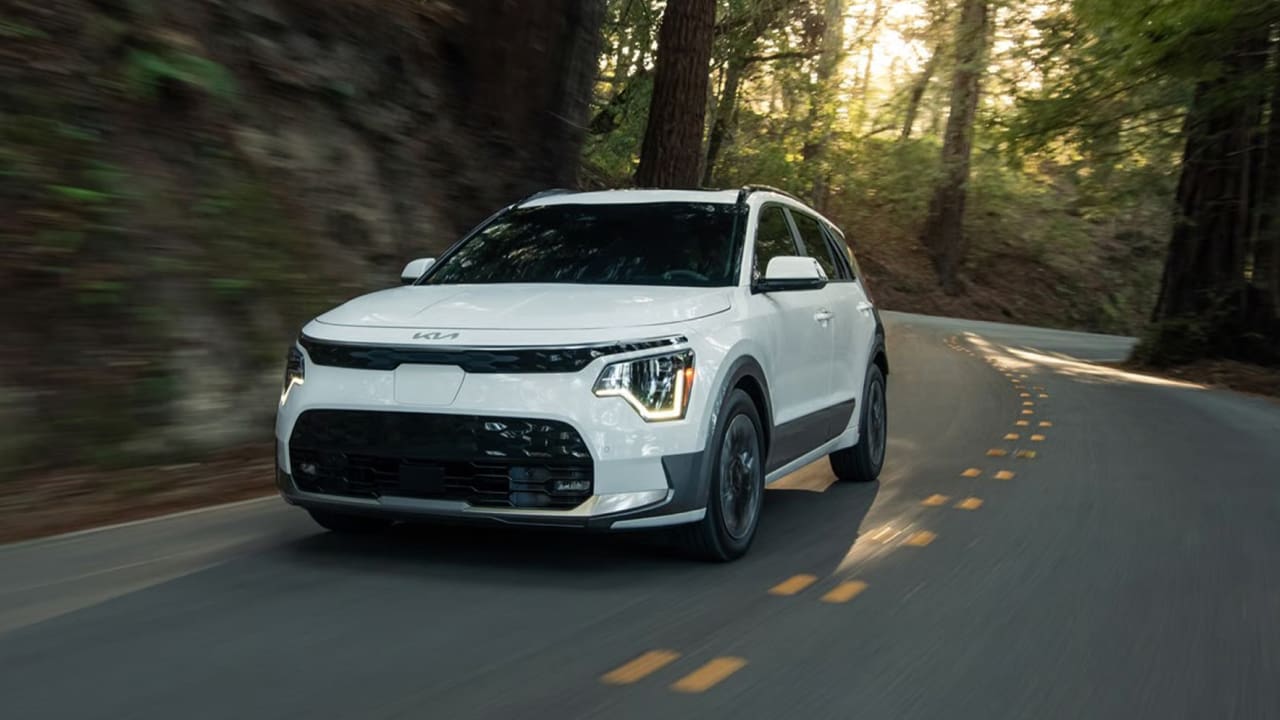
The Kia Niro EV is referred to as the most well-rounded entry in the electric crossover class. As one of the least expensive electric cars in its segment, the EV punches above its weight class for buyers prioritizing comfort, efficiency, and technology. The 2025 model has an improved interior, more cargo space than before, and a slew of standard safety features.
Kia’s Niro EV bucks the trend, offering an excellent mix of usable daily driving range and strong value. It doesn’t have AWD or face-smashing acceleration, but with its grown-up ride and practical layout, it’s one of the savviest choices in the sub-$40K EV world.
Specifications
| Features | Details |
| Starting Price | ~$39,600 |
| Range (EPA est.) | 253 miles |
| Battery Capacity | 64.8 kWh |
| Charging Time (240V) | ~7 hours |
| Fast Charging (DC) | ~43 minutes (10–80%) |
| Drivetrain | FWD |
| Horsepower | 201 hp |
| Torque | 188 lb-ft |
| 0–60 mph | ~7.0 seconds |
9. Nissan Ariya (2025)
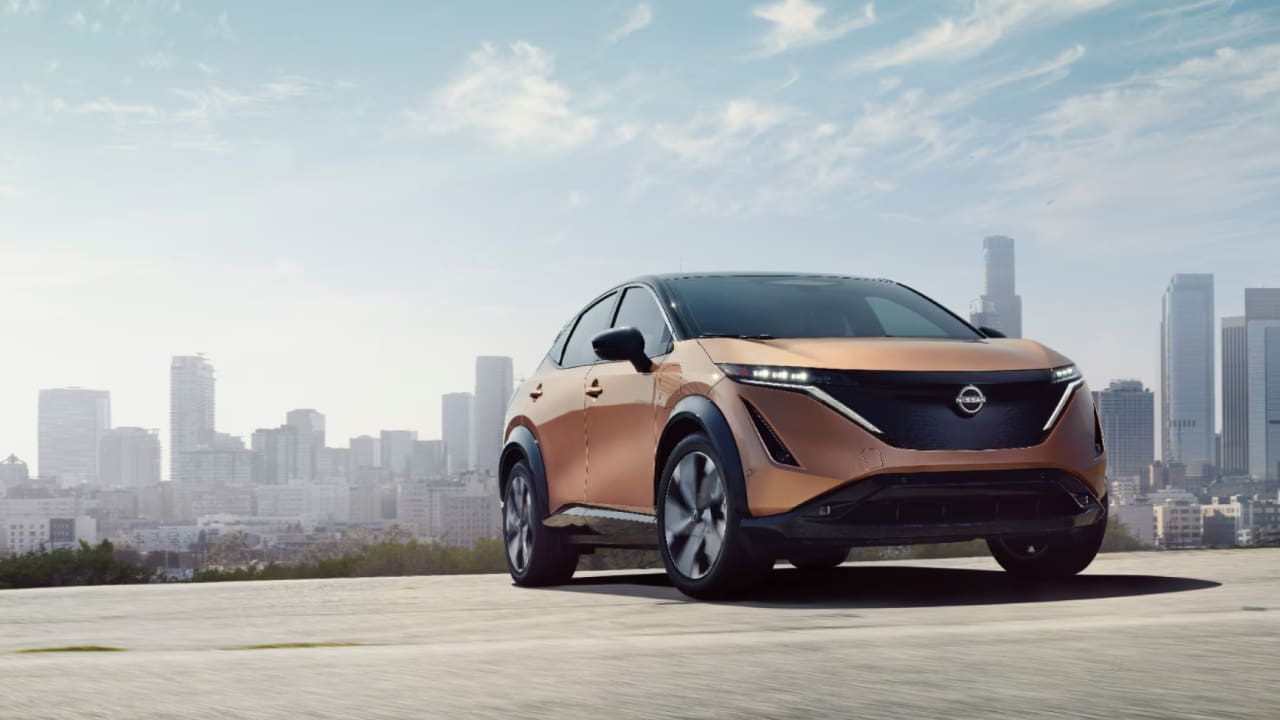
The Nissan Ariya is effectively a strong heir but aimed at a more up-to-date, more premium EV market. Sleeker SUV styling, dual-motor AWD choices, and a vastly improved interior make the Ariya seem like a big step forward for Nissan’s EV lineup.
You Might Like to Read: The World’s Priciest Car Brands
The base Engage FWD trim is also priced well and does provide a nice value for the money. The Ariya’s interior is a particular high point, with minimalist decoration, open-plan cabin architecture, and responsive tech interfaces. It’s perfect for drivers who crave comfort, connectivity, and quiet sophistication on a reasonable budget.
Specifications
| Features | Engage FWD |
| Starting Price | ~$39,590 |
| Range (EPA est.) | 216 miles |
| Battery Capacity | 63 kWh |
| Charging Time (240V) | ~10 hours |
| Fast Charging (DC) | ~35–40 minutes (10–80%) |
| Drivetrain | Front-Wheel Drive |
| Horsepower | 214 hp |
| Torque | 221 lb-ft |
| 0–60 mph | ~7.2 seconds |
10. Tesla Model 3 (RWD – 2025)
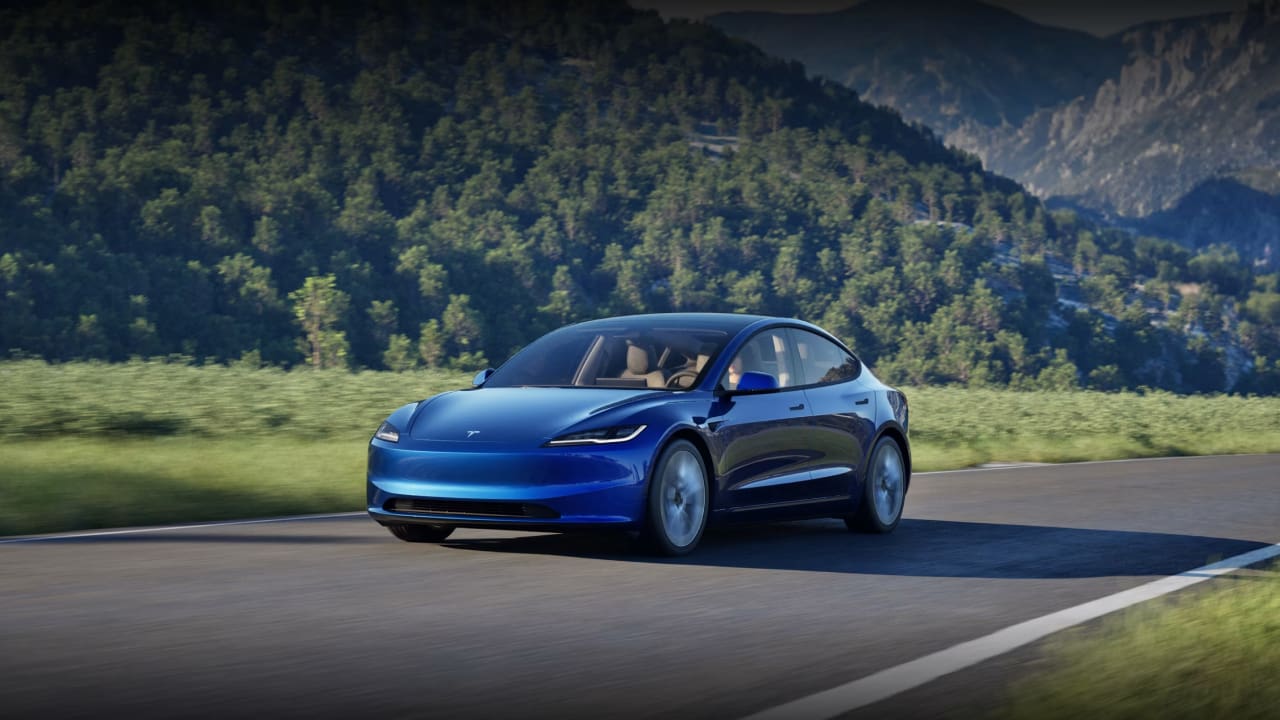
The Tesla Model 3 is among the most popular electric sedans worldwide. It is no longer the least expensive option for electric cars, but its base RWD model is still very compelling. Because of the great range, top-notch performance, and access to Tesla’s Supercharger network.
Tesla’s minimalist interior is enhanced with always-available-over-the-air software updates, strong navigation, and autonomous driving capability (optional with additional cost). The rear-wheel-drive Model 3 is still a lot of fun to drive, providing lively acceleration and precise handling that continues to outperform most vehicles in its class.
Specifications
| Features | RWD (Base Model) |
| Starting Price | ~$38,990 |
| Range (EPA est.) | 272 miles |
| Battery Capacity | ~60 kWh (LFP chemistry) |
| Charging Time (240V) | ~8.5 hours |
| Fast Charging (DC) | ~25 minutes (10–80%) |
| Drivetrain | Rear-Wheel Drive |
| Horsepower | ~283 hp |
| Torque | ~307 lb-ft |
| 0–60 mph | ~5.8 seconds |
11. Fiat 500e (2025)
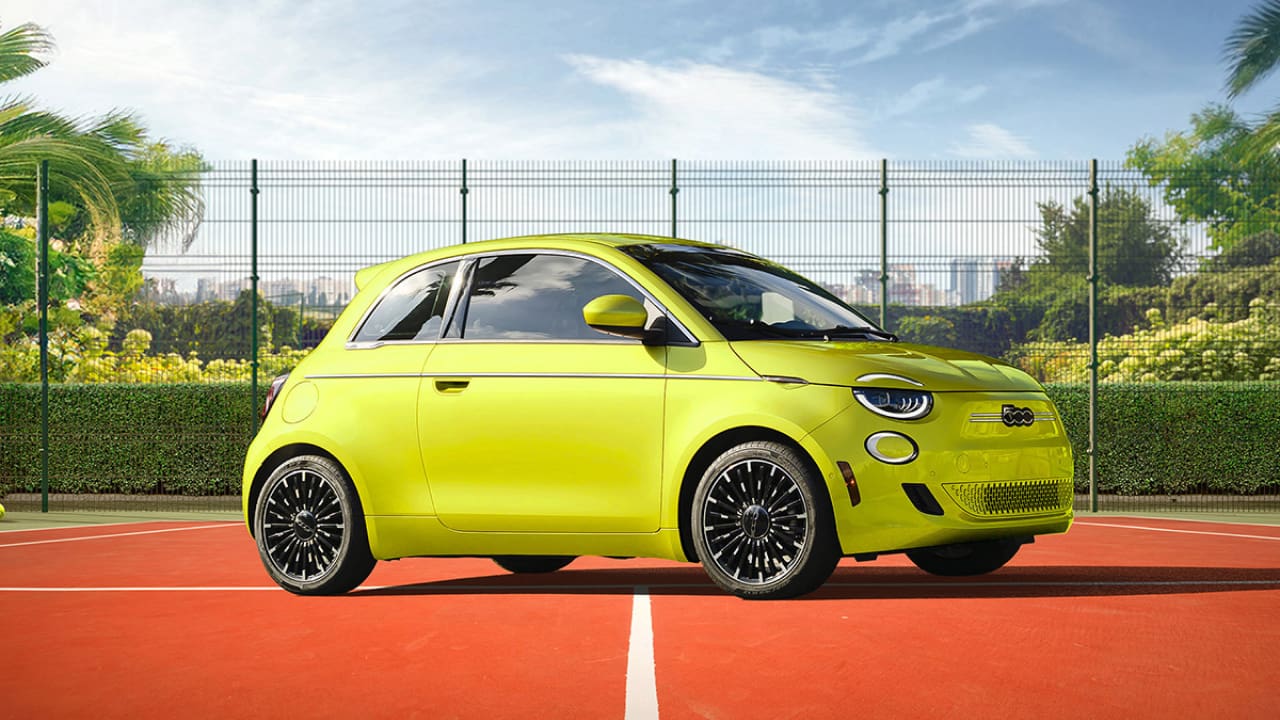
The Fiat 500e is relaunching in the United States as a stylish, city-dwelling electric runabout. It was designed with tight city spaces in mind – small, lightweight, and maneuverable. While not designed for long road trips, the 500e is a great second or daily city commuter.
It has a modest range, modest price, and heaps of personality. It caters to buyers who value form, flair, and simplicity over outright performance or versatility. It’s also one of the lightest EVs on the market, which not only saves weight but also helps it navigate around corners more nimbly in towns and cities.
Specifications
| Features | Details |
| Starting Price | ~$34,095 |
| Range (EPA est.) | ~149 miles |
| Battery Capacity | 42 kWh |
| Charging Time (240V) | ~4 hours |
| Fast Charging (DC) | ~35 minutes (10–80%) |
| Drivetrain | Front-Wheel Drive |
| Horsepower | 117 hp |
| Torque | 162 lb-ft |
| 0–60 mph | ~8.4 seconds |
Comparison Chart: The Cheapest EVs of 2025
| Model | Starting Price | EPA Range (mi) | Battery (kWh) | Drivetrain | Horsepower | 0–60 mph (sec) | DC Fast Charging |
| Nissan Leaf (S) | ~$28,000 | 149 | 40 | FWD | 147 | ~7.4 | ~60 min (80%) |
| Hyundai Kona Electric | ~$33,000 | 260 | 64.8 | FWD | 201 | ~6.4 | ~45 min (80%) |
| Chevrolet Equinox EV | ~$34,000 | 250–300 | ~85 | FWD / AWD | 210–290 | ~6.0 | ~40 min (80%) |
| Toyota bZ4X (FWD) | ~$38,000 | 252 | 71.4 | FWD | 201 | ~7.1 | ~60 min (80%) |
| Hyundai Ioniq 6 (RWD) | ~$38,500 | 361 | 77.4 | RWD | 225 | ~6.2 | ~18 min (80%) |
| Subaru Solterra | ~$44,000 | 228 | 72.8 | AWD | 215 | ~6.5 | ~56 min (80%) |
| Ford Mustang Mach-E | ~$39,895 | 250 | 70 | RWD | 266 | ~6.1 | ~33 min (80%) |
| Kia Niro EV | ~$39,600 | 253 | 64.8 | FWD | 201 | ~7.0 | ~43 min (80%) |
| Nissan Ariya (Engage) | ~$39,590 | 216 | 63 | FWD | 214 | ~7.2 | ~40 min (80%) |
| Tesla Model 3 (RWD) | ~$38,990 | 272 | ~60 | RWD | ~283 | ~5.8 | ~25 min (80%) |
| Fiat 500e | ~$34,095 | 149 | 42 | FWD | 117 | ~8.4 | ~35 min (80%) |
FAQs
Range differs dramatically by model, battery size, and driving conditions. In this list:
Minimum: 149 miles (Nissan Leaf S, Fiat 500e) – a good choice for city driving and brief commutes.
Maximum: 361 miles (Hyundai Ioniq 6 RWD Long Range) – competitive with premium EVs and a few gas-powered ones.
Most budget EVs now top 250 miles per charge, plenty for daily duties and even a modest road trip.
Yes, there are plenty of affordable EVs that are as dependable as any conventional car – and maybe even more so. Electric powertrains have a lot fewer moving parts than gas engines, so:
a. Less wear and tear
b. Less frequent oil changes or transmission issues
c. Lower long-term maintenance costs
On the EV reliability front, brands such as Hyundai, Nissan, Kia, and Tesla have a strong foundation, with thousands of vehicles on the road globally.
A cheap or low-cost electric car is usually described by:
a. Price Range: Under $45,000 (pre-incentive)
b. Compact to midsize dimensions
c. Functional range (150 to 300 miles at the least)
d. Basic to mid-level features
These cars are made to be practical every day, not to represent the height of luxury or track-topping performance.
Several automakers are leading the least expensive electric cars race:
a. Nissan – Leaf and Ariya
b. Hyundai/Kia – Kona, Ioniq 6, Niro
c. Chevrolet – Equinox EV
d. Ford – Mustang Mach-E (base trims)
e. Toyota/Subaru – bZ4X and Solterra
f. Fiat 500e
g. Tesla – Model 3 RWD
All of them are currently in the process of ramping up EV production and are worthy of consideration. They offer warranties that should ease the minds of those pinching pennies.
In most cases, yes. Here’s why:
a. Fuel savings: Charging costs a lot less than gasoline.
b. Maintenance: EVs have no oil and fewer fluids and parts to fail.
c. Tax incentives: Federal and state rebates can cut thousands off the purchase price.
d. Depreciation and resale: While earlier EVs depreciated quickly, newer models such as the Model 3 and Kona Electric are holding value better.
Affordable EVs typically offer a lower total cost of ownership compared to a gas-powered car over a 5–7-year span.
Here are smart strategies:
a. Utilize federal tax credits – up to $7,500 on qualifying vehicles.
b. Check state/local incentives – some locations provide rebates, charging discounts, or HOV access.
c. Buy during factory EV promotions or clearance sales.
d. Certified pre-owned EVs – gently used models can offer incredible value.
e. Install Level 2 home charging – cheaper, faster charging, which saves money in the long run.
Absolutely. Average Americans clock in about 35-40 miles each day on the road. Even the entry-level EVs on this list (Fiat 500e or Nissan Leaf S) will get most of you 3–4 days of regular driving on a single charge. If you’re commuting less than 50 miles a day and are charging at night, the “fear of being stranded” is no longer an issue.
At sticker price, most EVs still cost a bit more than their gas counterparts. However, in the long run, they often end up costing less due to:
a. Lower running costs
b. Cheaper fueling
c. Longer service intervals
d. Government incentives
More importantly, the gap is closing in a hurry. Now, vehicles like the Equinox EV, Kona, and Ioniq 6 compete directly on price with similar gas-burning SUVs.
Modern EVs are built to last:
a. Battery guarantee: Typically 8 years or 100,000 miles (or more)
b. Motor durability: Electric motors have a longer lifespan than gas engines
c. Chassis and components: Wear and deterioration are the same as in conventional vehicles
With proper care, today’s EVs can easily travel 150,000 to 200,000 miles of service life.
Focus on:
a. Real-world range – A minimum of 200 miles would be good
b. Charging speed – Fast DC charging could be the game-changer
c. Interior comfort – Good visibility, storage, and infotainment matter
d. Warranty – Look for strong battery and drivetrain coverage
e. Public charging access – Tesla wins it, but Electrify America and EVgo are ramping up quickly
Also, think about how you’ll be charging: at home, at work, or via public infrastructure.
Be cautious of:
a. Very limited range – <150 miles unless you are in a strictly urban environment
b. No DC fast charging – this is how you make it nearly unusable for long-distance driving.
c. Lack of service network – if the brand doesn’t have solid EV support
d. Overhyped range claims – always check the EPA-rated range, not the manufacturer hype
e. Older battery chemistry – Improved LFP or NMC cells are now more robust and efficient
Conclusion
The EV market in 2025 is no longer synonymous with ‘exclusivity’ or ‘expensive’. The segment that started as a niche for early adopters and even luxury car buyers has now turned into a competitive market where affordability and innovation intersect.
Today’s entry-level EVs provide more than just financial savings, but real performance, cutting-edge design, and lifelong sustainability. These least expensive electric cars aren’t even compromises. They are deliberate engineering answers for actual drivers, tailored for daily commutes and spontaneous road trips.
Whether you want to ditch gas completely, reduce your carbon footprint, or simply drive something bold and new, the choices are more interesting – and more realistic – than ever.
The electric future isn’t coming. It’s already parked in the driveway.
Related Pick: Celebrity Cars – The 14 Most Expensive Icons Owned
